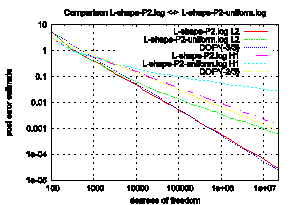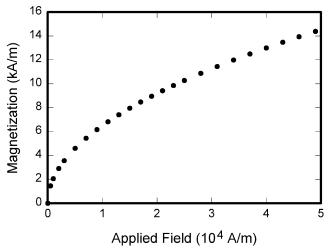为了更好的探索如何在研究生教育中激发创新意识,提高创新精神,探索中小企业发展的新理念、新成果,“2017年江苏省中小企业发展研究生学术创新论坛”定于2017年12月16日在江苏省镇江市召开。本次论坛将围绕“一带一路和供给侧改革背景下中国中小企业的发展:机遇与挑战”为主题,为管理学科及其相关学科的研究生提供发表学术见解和探讨学术前沿问题的机会。现面向全国研究生广泛征集学术论文,欢迎广大研究生踊跃参加。此次征文的相关事宜通知如下:
一、征文议题
1. 中小企业国际合作
2. 中小企业跨境电商
3. 中小企业智能制造
4. 中小企业融资
5. 中小企业创业成长
6. 中小企业产业融合
7. 中小企业发展政策
8. 中小企业创新发展
9. 中小企业转型发展
10.中小企业绿色发展
11.中小企业服务体系
12.中小企业参与农业经济改革
13.农民创业
14.大学生创业
15.高校创业教育
16.其它与会议主题相关议题。
二、征文要求
1.学术论文请按照附件1和附件2格式书写,字数为5000字以上。
2.在投寄稿件的同时,请附作者简历(性别、出生年月、学历、单位、联系方式、当前研究课题及研究方向等)。
3.论文应做到主题鲜明,观点正确,突出创新,结构严谨,语言流畅,有较高的理论价值或实践意义。
4.论文应是作者个人的研究成果,不得抄袭他人作品。
5.投稿方式:通过电子邮件投稿至:ujs1419@163.com。
三、征文评选
1.论坛根据专家评审意见,选出优秀论文(一、二、三等奖),优秀论文由省学位委员会办公室与江苏大学共同颁发获奖证书。
2.优秀论文给予奖金并编入论文集。
3. 论坛将邀请4-5名优秀研究生进行论文汇报。采取优秀研究生主讲、嘉宾点评、现场提问、观众互动等相结合的方式进行。
4. 论坛及论坛期间参与的学术成果不用于任何商业用途。
四、征文截止日期
2017年11月20日
五、联系方式
联系人:陈老师 联系电话:0511-88790129
投稿邮箱:ujs1419@163.com
365bet投注开户
2017年江苏省中小企业发展研究生学术创新论坛组委会
2017年9月8日
附件1 2017江苏省中小企业发展研究生学术创新论坛论文中文模板
附件2 2017江苏省中小企业发展研究生学术创新论坛论文英文模板
附件1
2017江苏省中小企业发展研究生学术创新论坛论文中文模板
2017年江苏省中小企业发展研究生学术创新论坛论文格式 要求(样稿)*
第一作者1,第二作者1,2,第三作者2
1. 国防科学技术大学机电工程与自动化学院自动控制系 长沙 410073
E-mail: aaa@nudt.edu.cn
2. 中国科学院 数学与系统科学研究院, 北京 100080
E-mail: aaa@iss.ac.cn
摘 要:2017江苏省中小企业发展研究生学术创新论坛为了提高论文集质量,我们为论文排版制定了统一规范。请按照此规范提供论文的最终版本。 注意:中文文章必须同时提供英文摘要和关键词。
关键词:论文,格式,电子文档
Template for Preparation of Papers
First Author1, Second Author1,2, Third Author2
1. Department of Automatic Control, College of Mechatronics and Automation, National University of Defense Technology, 410073,Changsha, P.R.China
E-mail: aaa@nudt.edu.cn
2. Academy of Mathematics and Systems Science, Chinese Academy of Sciences, Beijing 100080
E-mail: aaa@iss.ac.cn
Abstract: This is the paper style requirement. The writers of papers should and must provide normalized electronic documents in order for readers to search and read papers conveniently.
Key Words: Paper, Instruction, Graduate Innovation Forum of Hunan
1 文件类型要求(Typing Instructions)
2017江苏省中小企业发展研究生学术创新论坛为规范论文的版面, 特制作此模板——中文MS Word模板, 同时我们也制定了英文MS Word模板。
1.1 提交论文作者须知 (Instructions for Author)
根据出版社编辑加工的需要,每篇论文需提交电子版DOC文档一份。
2 版面要求(Formatting Instructions)
论文排版在A4纸张上。版面居中。 这里给出论文版面的详细规范及其说明。
2.1 页面和字体设置 (Page/Font Settings)
本文是一个MS Word中文模板,您可以直接使用此模板,也可以按照要求建立自己的模板。表1和表2分别给出页面设置和字体设置,请以此作为自己设置模板的规范。
表1 页面设置
纸 张 |
21×29.7cm |
上边距 |
2.54cm |
下边距 |
2.54cm |
左边距 |
2.54cm |
右边距 |
2.54cm |
表2 字体设置
题目 |
三号, 黑体, 加粗, |
作者 |
五号, 宋体 |
作者地址 |
五号, 宋体 |
Email |
五号, Times New Roman |
摘要、关键词 |
号, 宋体; “摘 要”、“关键词” 两词,五号, 黑体 |
题目(英文) |
三号, Times New Roman, 加粗 |
作者(英文) |
五号, Times New Roman |
作者地址(英文),Email |
五号, Times New Roman |
摘要、关键词(英文) |
五号, Times New Roman, “Abstract”, “Key word”五号,加粗 |
一级标题 |
四号, 黑体 |
二级及二级以下标题 |
五号, 黑体 |
一级标题(英文) |
四号, Times New Roman, |
二级及二级以下标题(英文) |
五号, Times New Roman, |
正文字体 |
五号, 宋体 |
图、表标题 |
小五号, 黑体 |
表内文字 |
小五号, 宋体或Times New Roman |
脚注 |
8磅, 宋体或Times New Roman |
参考文献 |
五号, 宋体, 或五号, Times New Roman, “参考文献”四号, 黑体 |
2.2 题目及摘要(Title and Abstract Setting)
题目,三号黑体,加粗,段前空18磅,段后空12磅。
作者五号宋体占一行。当作者为不同单位时,用罗马数字作为上标标注。
作者单位、所在城市、邮编为五号宋体占一行,段前空6磅.Email地址五号,Times New Roman体。当有多个单位时,按照作者的标注顺序,列出单位等信息,字体格式如前所述。
摘要、关键词字体为五号宋体,“摘 要”、“关键词”两词顶头,五号黑体。 摘要段前空12磅。
中文论文同时需要提供英文摘要等信息。
英文题目三号,Times New Roman字体,加粗.段前空18磅,段后空12磅。 每个单词的第一个字母大写,其它字符均为小写。
作者英文姓名为五号,Times New Roman字体,占一行。
作者英文单位、地址、城市、邮编,五号,Times New Roman字体,占一行,段前空6磅。单位中每个单词的第一个字符大写,后面字符小写。
Email地址五号,Times New Roman体。
英文摘要、关键词字体为五号Times New Roman, “Abstract”,“Key word”加粗,“Abstract”段前空12磅,“Key word”段后18磅。对于英文文章,中文摘要的最后“关键字”段后18磅。
以上均为单倍行距。
2.3 标题 (Section and Subsection Headings)
标题居左、顶头,并同时提供英文标题。节号用阿拉伯数字1, 2。……连续地排,下一级标题的节号要包含上一级标题的节号,用“.”分隔,格式如上行。
一级标题中文为四号黑体,英文为四号Times New Roman体。英文标题大写。段前、后各空6磅。
二级及二级以下标题中文为5号黑体,英文为五号Times New Roman体。 英文标题首字母大写,其它小写。 段前、后各空6磅。
以上均为单倍行距。
2.4 正文(Main Text)
正文版面为A4纸,采用五号宋体, 正文中的英文为五号Times New Roman体。段头空两个中文字,单倍行距,段后空2磅。
2.5 表格(Tables)
表的标题位于表上方,居中, 小五号黑体, 段前、后各空6磅。表的序号用阿拉伯数字。表中文字为中文小五号宋体或者英文小五号Times New Roman体。表格上、下边框为双线,左、右无边框,表内用单线分隔。
2.6 图(Figures)
图的标题位于图的下方,居中,小五号黑体,段前、后各空6磅.图的序号用阿拉伯数字。图形尽可能放置在文中提到的段落后面。为了使图形更加清晰,请用原始图或者照片。

图 1 The Caption
2.7 数学公式(Mathematical Formulas)
数学公式居中,根据需要可以添加公式编号。
 (1)
(1)
2.8 参考文献(References)
参考文献按照文中出现的顺序排列。 排列序号为方括号中插入阿拉伯数字, 例如“[1]”。
“参考文献”四个字为四号黑体,居左顶头,占一行。段前空12磅,段后空6磅。
中文参考文献为五号宋体, 英文参考文献为五号Times New Roman体。 段头不空, 悬挂式缩进0.57cm,单倍行距,段后空2磅。
参考文献为期刊论文时, 每篇论文包括作者、题名、刊名、卷、期、页、出版年信息; 参考文献为专著时,每本专著包括著者、书名、版本、出版地、出版者、出版年信息。具体形式可参见本文中参考文献样例。
3 注意事项(Checklist)
l 标题不要落在页面的底部;
l 文中要保持行距一致;
l 图、表最好放置在文中提到的段落附近;
l 文中不需要插入页码;
l 正文中的第一行不要删除,否则脚注将被删除。
参考文献
[1] 洪奕光,程代展. 非线性系统的分析与控制,科学出版社, 北京,2005.
[2] 孙轶民,郭雷. 关于平面仿射非线性系统的全局渐近能控性,中国科学(E辑),Vol.35, No.8, 830-839, 2005.
[3] Daizhan Cheng, Controllability of Switched Bilinear Systems, IEEE Trans. on Automatic Control, Vol.50, No.4, 511-515, 2005.
[4] Daizhan Cheng, R. Ortega, E. Panteley, On port controlled Hamiltonian systems. in Advanced Robust and Adaptive Control –Theory and Applications, (D. Cheng, Y. Sun, T. Shen, H. Ohmori eds), 3-16, , 2005.
附件2
2017江苏省中小企业发展研究生学术创新论坛论文英文模板
Template for Preparation of Papers*
First Author1, Second Author1,2, Third Author2
1. Department of Automatic Control, College of Mechatronics and Automation, National University of Defense Technology, 410073,Changsha, P.R.China
E-mail: aaa@nudt.edu.cn
2. Academy of Mathematics and Systems Science, Chinese Academy of Sciences, Beijing 100080
E-mail: aaa@iss.ac.cn
Abstract: This is the paper style requirement. The writers of papers should and must provide normalized electronic documents in order for readers to search and read papers conveniently.
Key Words: Paper, Instruction, Graduate Innovation Forum of Hunan
2017江苏省中小企业发展研究生学术创新论坛论文格式要求(样稿)
第一作者1,第二作者1,2,第三作者2
1. 国防科学技术大学机电工程与自动化学院自动控制系 长沙 410073
E-mail: aaa@nudt.edu.cn
2. 中国科学院 数学与系统科学研究院, 北京 100080
E-mail: aaa@iss.ac.cn
摘 要:2017江苏省中小企业发展研究生学术创新论坛为了提高论文集质量,我们为论文排版制定了统一规范。请按照此规范提供论文的最终版本。 注意:中文文章必须同时提供英文摘要和关键词。
关键词:论文,格式,电子文档
1 INTRODUCTION
These are instructions for authors typesetting . This document has been prepared using the required format. Please use this document as a “template” to prepare your manuscript. Do not delete the blank line immediately above the first section; it sets the footnote at the bottom of this column.
1.2 Instructions for Authors
According to the need of publishers editing ,each paper will be submitted DOC.
2 FORMATTING INSTRUCTIONS
MS Word Authors: please try to use the paragraph styles contained in this document.
2.9 Page/Font Settings
It is strongly recommended that prospective authors download templates for use with MS Word.
Templates provided here have been created to ensure that margin requirement is adequately met. If, for some reason, you are not able to use provided templates, please observe the following margins and font settings strictly.
Table1. Page Margins
Paper Size |
21×29.7cm |
Top Margin (1st page) |
2.54cm |
Top Margin (rest) |
2.54cm |
Left Margin |
2.54cm |
Right Margin |
2.54cm |
Table2. Font Settings
Title |
Times New Roman, 16pt,bold |
Author List |
Times New Roman, 10.5pt |
Authors’ Address |
10.5pt |
Abstract, Key Words |
10.5pt |
Section Titles |
14pt,bold |
Subsection Titles |
10.5pt,bold |
Normal Text |
10.5pt |
Table/Figure Captions |
9pt |
Footnotes |
8pt |
References |
10.5pt |
2.10 Section and Subsection Headings
Number section and subsection headings consecutively in Arabic numbers and type them in bold. Avoid using too many capital letters. If any further subdivision of a subsection is needed the titles should be 10.5 point and flushed left.
2.11 Main Text
Use Times New Roman with font size 10.5 point for text (character size). Paragraphs are separated by 6 point and with no indentation. You may type on plain white A4 paper.
2.12 Tables
All tables must be centered in the column and numbered consecutively (in Arabic numbers). Table headings should be placed above the table. Place tables as close as possible to where they are mentioned in the main text (see Table1 and Table2).
2.13 Figures
All illustrations should be original drawings or photographic prints of originals. Photographs should be glossy prints. Photocopies are often not good enough and should be avoided. All illustrations must be numbered consecutively, using Arabic numbers. Center figure captions beneath the figure (see Figure 1). If possible, do not assemble figures at the back of your article, but place them as close as possible to where they are mentioned in the main text. No part of a figure should go beyond the typing area. Captions should appear below graphical objects, as in Figure 1.

Fig 1. Magnetization as a function of applied field. It is good practice to explain the significance of the figure in the caption.
Color and grayscale figures should be prepared with 400 dpi resolution and saved with no compression, monochrome figure should be prepared with 600 dpi resolution and saved with no compression.
2.14 Mathematical Formulas
Mathematical formulas should be roughly centered and have to be numbered as formula (1).
 (1)
(1)
2.15 References
Number citations consecutively in square brackets [1]. The sentence punctuation follows the brackets [2].
Please note that the references at the end of this document are in the preferred referencing style. Give all authors’ names; do not use “et al.” unless there are six authors or more. Use a space after authors' initials.
3 FINE TUNING
l Do not end a page with a section or subsection heading.
l Do not include page numbers in the text
4 PAPER SUBMISSION
After proofreading your paper, it must be sent to the relevant E-mail electronically including both MS Word and PDF formats.
References
[1] D. Z. Cheng, Controllability of switched bilinear systems, IEEE Trans. on Automatic Control, Vol.50, No.4, 511-515, 2005.
[2] D. Z. Cheng, Matrix and Polynomial Approach to Dynamic Control Systems, Science Press, Beijing, China, 2002.
[3] D. Z. Cheng, On logic-based intelligent systems, Proceedings of 5th International Conference on Control and Automation, 71-76, 2005.